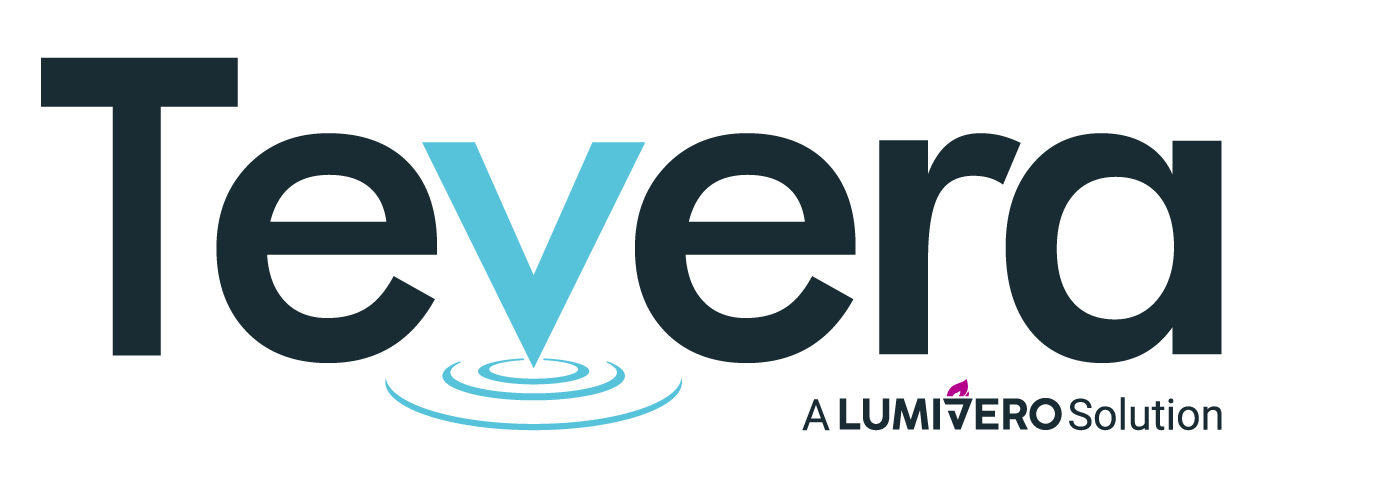AACN Accreditation Requirements and Standards
Most registered nursing schools and universities in the United States have earned accreditation. For many students, choosing an accredited program is critical because it reflects the institution’s quality of education and training. Also, potential employers look for accreditation when hiring nurses.
As a program director or administrator, striving for accreditation is essential if you want your program to stand out as reputable. However, achieving accreditation can be challenging due to the amount of documentation required to meet strict standards set by the American Association of Colleges of Nursing, or AACN. With the correct platform, you can easily gather and track student and program data and run reports to make it easier to meet these accreditation standards.
What is AACN Accreditation?
The ACCN established a national self-governing accrediting agency called the Commission on Collegiate Nursing Education. The CCNE ensures the quality and integrity of education programs preparing students to become licensed nurses. The U.S. Secretary of Education officially recognizes the CCNE, which serves public health by evaluating and identifying nursing programs that uphold effective educational skills, practices and outcomes. Other goals of the CCNE include the following.
- Holding nursing programs accountable to students, residents, institutions, employers and consumers by ensuring they have mission statements and goals that appropriately prepare individuals for their roles
- Evaluating the program’s success in achieving its outcomes and goals
- Determining the extent to which the program meets accreditation standards
- Informing the public of the values and purposes of accreditation and the programs that meet these standards
- Fostering continual improvement
Receiving accreditation from the AACN through the CCNE means your entire nursing program, from curriculum to faculty proficiency to graduation requirements, will undergo a thorough review. This accreditation is valuable for many reasons, including the fact that students must attend a nationally recognized accreditation program to receive financial aid. AACN accreditation also holds nursing programs accountable to ensure all nurses receive a high level of education that meets the national standard.
If your program earns CCNE accreditation, you can assure prospective students and residents that they will receive high-quality, comprehensive education, sit for licensing exams, and be prepared to enter the workforce after graduation.
Nurses graduating from this program are more competitive in the job market. If your program earns CCNE accreditation, you can assure prospective students and residents that they will receive high-quality, comprehensive education, sit for licensing exams and be ready to enter the workforce after graduation.
AACN Accreditation Requirements and Standards
The most recent publication from the AACN of the accreditation requirements set by the CCNE was in 2018 and went into effect in 2019. Here are the AACN accreditation standards for nursing programs.
1. Mission and Governance
Here are some of the noteworthy elements under the Mission and Governance standard.
- Mission and expected program outcomes align with the institution’s goals and are reviewed and revised as needed.
- Mission, goals and expected program outcomes are consistent with professional nursing guidelines and standards for professional preparation.
- Students and faculty participate in program governance.
- Academic policies are fair, equitable, accessible and reviewed for revision as necessary.
- The program reviews complaints according to established policies.
- Publications and documents are accurate.
2. Institutional Commitment and Resources
The Institutional Commitment and Resources standard includes the following.
- Financial and physical resources are sufficient to help the program achieve its mission, goals and expected outcomes and modified as needed.
- Students have access to academic support services.
- The chief nurse administrator of the program is a registered nurse and holds the necessary degrees and skills to help the program accomplish its goals.
- The program’s faculty are sufficient in number and academically prepared for the areas in which they teach.
- Mentors and coaches are also qualified for their roles.
- The institution and program provide the support that encourages faculty to keep up with the expected outcomes.
3. Curriculum and Teaching-Learning Practices
Core tenets of the Curriculum and Teaching-Learning Practices standard include the following.
- The curriculum for all education levels and degrees is developed, implemented and revised to reflect the current professional nursing standards and guidelines.
- The curriculum is logically structured to help students achieve expected outcomes.
- Teaching-learning practices include consideration and support of the needs and expectations of the community of interest.
- The curriculum includes clinical practice experience that fosters collaboration and new knowledge.
- Individual student performance and teaching-learning practices are regularly evaluated to ensure policies are consistently applied.
4. Assessment and Achievement of Program Outcomes
Here are some of the key elements under the Assessment and Achievement of Program Outcomes standard.
- Program effectiveness is determined by program completion rates, licensure pass rates, employment rates, certification pass rates, and a systematic process.
- Completion, licensure, certification and employment rate data are used to support ongoing program improvement.
- Aggregate faculty outcomes and program outcomes reflect program effectiveness.
How Tevera Helps Colleges Earn and Maintain AACN Accreditation
AACN accreditation can put your institution on the map for many students looking for a program that meets specific standards that can help them get licensed more easily. However, achieving this accreditation can be challenging and time-consuming. As a program director or administrator, you’re already overseeing many students and helping them meet their graduation requirements, so you may not have extra time on your hands to collect data from various sources and run reports. That’s where Tevera comes in.
Tevera is a platform that helps students and programs thrive with various functions, which include:
- Giving students, faculty, deans and third-party administrators access to the same software to create a community
- Hosting data in one place for easy retrieval
- Instantly generating reports based on selected filters
- Gathering stats about post-grad success to get an idea of program effectiveness
- Centralizing data to save faculty time and prevent them from looking across different programs
- Providing data and statistics for students and professors to see progress toward accreditation
With Tevera, you can eliminate many of the pain points you currently deal with and streamline your AACN reporting processes to help you achieve accreditation. Whether you want to track field experience hours or program outcomes, Tevera can meet all your data and reporting needs.
AACN Accreditation Reporting
With Tevera, you can simplify your accreditation process by accessing various assessment reports much faster. With the touch of a button, you can instantly generate student and program outcome reports to determine how well your students are meeting AACN requirements, including:
- Individual Student Rubric Analysis
- Group Rubric Analysis
- Individual Student Accreditation Standards
- Group Analysis of Accreditation Standards
- Accreditation Standards Raw Data
Using Tevera at your university empowers everyone involved in your program, from students to admins to faculty members. Anyone in the system can run reports on a specific student or the entire program to see how well you align with AACN requirements. Tevera’s reporting tools make it easier to determine if you’re eligible and ready to apply for accreditation. If you’re not quite there yet, you can continually review reports and adjust your curriculum and program outcomes accordingly to meet those standards.
At Tevera, we know how frustrating it can be when all your data is in different locations. To develop an accredited, reputable program, you need to rely on tools that can capture and track your program information data in one place. With Tevera, you can quickly create, view and compare reports to ensure you’re on track with AACN regulations.
Simplify AACN Accreditation With Tevera
If your program becomes AACN accredited, you can open many more doors for your students and enhance their future careers. However, the road to becoming accredited requires much time, effort and documentation. Automated reporting from Tevera makes applying for accreditation easier. With our software, you can be confident that you’re meeting assessment standards by accessing centralized data and a community of peers to network and improve efficiencies.
Tevera features an easy-to-use interface so students and alumni can track hours toward licensure while administrators can save on costs by eliminating disconnected and outdated programs. Tevera will continue to meet your institution’s needs and adjust to changing accreditation standards — so you will always be on track. If you’re ready to achieve AACN accreditation, allow Tevera to make the journey more organized and streamlined. Schedule a product overview with us today to discover how we can help you meet accreditation standards.
Interested in Learning About Other Accreditation Bodies Tevera Supports?
SOLUTIONS
RELATED POSTS
PRODUCT OVERVIEW
See how Tevera can elevate your program.
AACN Accreditation Requirements and Standards
Most registered nursing schools and universities in the United States have earned accreditation. For many students, choosing an accredited program is critical because it reflects the institution’s quality of education and training. Also, potential employers look for accreditation when hiring nurses.
As a program director or administrator, striving for accreditation is essential if you want your program to stand out as reputable. However, achieving accreditation can be challenging due to the amount of documentation required to meet strict standards set by the American Association of Colleges of Nursing, or AACN. With the correct platform, you can easily gather and track student and program data and run reports to make it easier to meet these accreditation standards.
What is AACN Accreditation?
The ACCN established a national self-governing accrediting agency called the Commission on Collegiate Nursing Education. The CCNE ensures the quality and integrity of education programs preparing students to become licensed nurses. The U.S. Secretary of Education officially recognizes the CCNE, which serves public health by evaluating and identifying nursing programs that uphold effective educational skills, practices and outcomes. Other goals of the CCNE include the following.
- Holding nursing programs accountable to students, residents, institutions, employers and consumers by ensuring they have mission statements and goals that appropriately prepare individuals for their roles
- Evaluating the program’s success in achieving its outcomes and goals
- Determining the extent to which the program meets accreditation standards
- Informing the public of the values and purposes of accreditation and the programs that meet these standards
- Fostering continual improvement
Receiving accreditation from the AACN through the CCNE means your entire nursing program, from curriculum to faculty proficiency to graduation requirements, will undergo a thorough review. This accreditation is valuable for many reasons, including the fact that students must attend a nationally recognized accreditation program to receive financial aid. AACN accreditation also holds nursing programs accountable to ensure all nurses receive a high level of education that meets the national standard.
If your program earns CCNE accreditation, you can assure prospective students and residents that they will receive high-quality, comprehensive education, sit for licensing exams, and be prepared to enter the workforce after graduation.
Nurses graduating from this program are more competitive in the job market. If your program earns CCNE accreditation, you can assure prospective students and residents that they will receive high-quality, comprehensive education, sit for licensing exams and be ready to enter the workforce after graduation.
AACN Accreditation Requirements and Standards
The most recent publication from the AACN of the accreditation requirements set by the CCNE was in 2018 and went into effect in 2019. Here are the AACN accreditation standards for nursing programs.
1. Mission and Governance
Here are some of the noteworthy elements under the Mission and Governance standard.
- Mission and expected program outcomes align with the institution’s goals and are reviewed and revised as needed.
- Mission, goals and expected program outcomes are consistent with professional nursing guidelines and standards for professional preparation.
- Students and faculty participate in program governance.
- Academic policies are fair, equitable, accessible and reviewed for revision as necessary.
- The program reviews complaints according to established policies.
- Publications and documents are accurate.
2. Institutional Commitment and Resources
The Institutional Commitment and Resources standard includes the following.
- Financial and physical resources are sufficient to help the program achieve its mission, goals and expected outcomes and modified as needed.
- Students have access to academic support services.
- The chief nurse administrator of the program is a registered nurse and holds the necessary degrees and skills to help the program accomplish its goals.
- The program’s faculty are sufficient in number and academically prepared for the areas in which they teach.
- Mentors and coaches are also qualified for their roles.
- The institution and program provide the support that encourages faculty to keep up with the expected outcomes.
3. Curriculum and Teaching-Learning Practices
Core tenets of the Curriculum and Teaching-Learning Practices standard include the following.
- The curriculum for all education levels and degrees is developed, implemented and revised to reflect the current professional nursing standards and guidelines.
- The curriculum is logically structured to help students achieve expected outcomes.
- Teaching-learning practices include consideration and support of the needs and expectations of the community of interest.
- The curriculum includes clinical practice experience that fosters collaboration and new knowledge.
- Individual student performance and teaching-learning practices are regularly evaluated to ensure policies are consistently applied.
4. Assessment and Achievement of Program Outcomes
Here are some of the key elements under the Assessment and Achievement of Program Outcomes standard.
- Program effectiveness is determined by program completion rates, licensure pass rates, employment rates, certification pass rates, and a systematic process.
- Completion, licensure, certification and employment rate data are used to support ongoing program improvement.
- Aggregate faculty outcomes and program outcomes reflect program effectiveness.
How Tevera Helps Colleges Earn and Maintain AACN Accreditation
AACN accreditation can put your institution on the map for many students looking for a program that meets specific standards that can help them get licensed more easily. However, achieving this accreditation can be challenging and time-consuming. As a program director or administrator, you’re already overseeing many students and helping them meet their graduation requirements, so you may not have extra time on your hands to collect data from various sources and run reports. That’s where Tevera comes in.
Tevera is a platform that helps students and programs thrive with various functions, which include:
- Giving students, faculty, deans and third-party administrators access to the same software to create a community
- Hosting data in one place for easy retrieval
- Instantly generating reports based on selected filters
- Gathering stats about post-grad success to get an idea of program effectiveness
- Centralizing data to save faculty time and prevent them from looking across different programs
- Providing data and statistics for students and professors to see progress toward accreditation
With Tevera, you can eliminate many of the pain points you currently deal with and streamline your AACN reporting processes to help you achieve accreditation. Whether you want to track field experience hours or program outcomes, Tevera can meet all your data and reporting needs.
AACN Accreditation Reporting
With Tevera, you can simplify your accreditation process by accessing various assessment reports much faster. With the touch of a button, you can instantly generate student and program outcome reports to determine how well your students are meeting AACN requirements, including:
- Individual Student Rubric Analysis
- Group Rubric Analysis
- Individual Student Accreditation Standards
- Group Analysis of Accreditation Standards
- Accreditation Standards Raw Data
Using Tevera at your university empowers everyone involved in your program, from students to admins to faculty members. Anyone in the system can run reports on a specific student or the entire program to see how well you align with AACN requirements. Tevera’s reporting tools make it easier to determine if you’re eligible and ready to apply for accreditation. If you’re not quite there yet, you can continually review reports and adjust your curriculum and program outcomes accordingly to meet those standards.
At Tevera, we know how frustrating it can be when all your data is in different locations. To develop an accredited, reputable program, you need to rely on tools that can capture and track your program information data in one place. With Tevera, you can quickly create, view and compare reports to ensure you’re on track with AACN regulations.
Simplify AACN Accreditation With Tevera
If your program becomes AACN accredited, you can open many more doors for your students and enhance their future careers. However, the road to becoming accredited requires much time, effort and documentation. Automated reporting from Tevera makes applying for accreditation easier. With our software, you can be confident that you’re meeting assessment standards by accessing centralized data and a community of peers to network and improve efficiencies.
Tevera features an easy-to-use interface so students and alumni can track hours toward licensure while administrators can save on costs by eliminating disconnected and outdated programs. Tevera will continue to meet your institution’s needs and adjust to changing accreditation standards — so you will always be on track. If you’re ready to achieve AACN accreditation, allow Tevera to make the journey more organized and streamlined. Schedule a product overview with us today to discover how we can help you meet accreditation standards.
Interested in Learning About Other Accreditation Bodies Tevera Supports?
AACN Accreditation Requirements and Standards
Most registered nursing schools and universities in the United States have earned accreditation. For many students, choosing an accredited program is critical because it reflects the institution’s quality of education and training. Also, potential employers look for accreditation when hiring nurses.
As a program director or administrator, striving for accreditation is essential if you want your program to stand out as reputable. However, achieving accreditation can be challenging due to the amount of documentation required to meet strict standards set by the American Association of Colleges of Nursing, or AACN. With the correct platform, you can easily gather and track student and program data and run reports to make it easier to meet these accreditation standards.
What is AACN Accreditation?
The ACCN established a national self-governing accrediting agency called the Commission on Collegiate Nursing Education. The CCNE ensures the quality and integrity of education programs preparing students to become licensed nurses. The U.S. Secretary of Education officially recognizes the CCNE, which serves public health by evaluating and identifying nursing programs that uphold effective educational skills, practices and outcomes. Other goals of the CCNE include the following.
- Holding nursing programs accountable to students, residents, institutions, employers and consumers by ensuring they have mission statements and goals that appropriately prepare individuals for their roles
- Evaluating the program’s success in achieving its outcomes and goals
- Determining the extent to which the program meets accreditation standards
- Informing the public of the values and purposes of accreditation and the programs that meet these standards
- Fostering continual improvement
Receiving accreditation from the AACN through the CCNE means your entire nursing program, from curriculum to faculty proficiency to graduation requirements, will undergo a thorough review. This accreditation is valuable for many reasons, including the fact that students must attend a nationally recognized accreditation program to receive financial aid. AACN accreditation also holds nursing programs accountable to ensure all nurses receive a high level of education that meets the national standard.
If your program earns CCNE accreditation, you can assure prospective students and residents that they will receive high-quality, comprehensive education, sit for licensing exams, and be prepared to enter the workforce after graduation.
Nurses graduating from this program are more competitive in the job market. If your program earns CCNE accreditation, you can assure prospective students and residents that they will receive high-quality, comprehensive education, sit for licensing exams and be ready to enter the workforce after graduation.
AACN Accreditation Requirements and Standards
The most recent publication from the AACN of the accreditation requirements set by the CCNE was in 2018 and went into effect in 2019. Here are the AACN accreditation standards for nursing programs.
1. Mission and Governance
Here are some of the noteworthy elements under the Mission and Governance standard.
- Mission and expected program outcomes align with the institution’s goals and are reviewed and revised as needed.
- Mission, goals and expected program outcomes are consistent with professional nursing guidelines and standards for professional preparation.
- Students and faculty participate in program governance.
- Academic policies are fair, equitable, accessible and reviewed for revision as necessary.
- The program reviews complaints according to established policies.
- Publications and documents are accurate.
2. Institutional Commitment and Resources
The Institutional Commitment and Resources standard includes the following.
- Financial and physical resources are sufficient to help the program achieve its mission, goals and expected outcomes and modified as needed.
- Students have access to academic support services.
- The chief nurse administrator of the program is a registered nurse and holds the necessary degrees and skills to help the program accomplish its goals.
- The program’s faculty are sufficient in number and academically prepared for the areas in which they teach.
- Mentors and coaches are also qualified for their roles.
- The institution and program provide the support that encourages faculty to keep up with the expected outcomes.
3. Curriculum and Teaching-Learning Practices
Core tenets of the Curriculum and Teaching-Learning Practices standard include the following.
- The curriculum for all education levels and degrees is developed, implemented and revised to reflect the current professional nursing standards and guidelines.
- The curriculum is logically structured to help students achieve expected outcomes.
- Teaching-learning practices include consideration and support of the needs and expectations of the community of interest.
- The curriculum includes clinical practice experience that fosters collaboration and new knowledge.
- Individual student performance and teaching-learning practices are regularly evaluated to ensure policies are consistently applied.
4. Assessment and Achievement of Program Outcomes
Here are some of the key elements under the Assessment and Achievement of Program Outcomes standard.
- Program effectiveness is determined by program completion rates, licensure pass rates, employment rates, certification pass rates, and a systematic process.
- Completion, licensure, certification and employment rate data are used to support ongoing program improvement.
- Aggregate faculty outcomes and program outcomes reflect program effectiveness.
How Tevera Helps Colleges Earn and Maintain AACN Accreditation
AACN accreditation can put your institution on the map for many students looking for a program that meets specific standards that can help them get licensed more easily. However, achieving this accreditation can be challenging and time-consuming. As a program director or administrator, you’re already overseeing many students and helping them meet their graduation requirements, so you may not have extra time on your hands to collect data from various sources and run reports. That’s where Tevera comes in.
Tevera is a platform that helps students and programs thrive with various functions, which include:
- Giving students, faculty, deans and third-party administrators access to the same software to create a community
- Hosting data in one place for easy retrieval
- Instantly generating reports based on selected filters
- Gathering stats about post-grad success to get an idea of program effectiveness
- Centralizing data to save faculty time and prevent them from looking across different programs
- Providing data and statistics for students and professors to see progress toward accreditation
With Tevera, you can eliminate many of the pain points you currently deal with and streamline your AACN reporting processes to help you achieve accreditation. Whether you want to track field experience hours or program outcomes, Tevera can meet all your data and reporting needs.
AACN Accreditation Reporting
With Tevera, you can simplify your accreditation process by accessing various assessment reports much faster. With the touch of a button, you can instantly generate student and program outcome reports to determine how well your students are meeting AACN requirements, including:
- Individual Student Rubric Analysis
- Group Rubric Analysis
- Individual Student Accreditation Standards
- Group Analysis of Accreditation Standards
- Accreditation Standards Raw Data
Using Tevera at your university empowers everyone involved in your program, from students to admins to faculty members. Anyone in the system can run reports on a specific student or the entire program to see how well you align with AACN requirements. Tevera’s reporting tools make it easier to determine if you’re eligible and ready to apply for accreditation. If you’re not quite there yet, you can continually review reports and adjust your curriculum and program outcomes accordingly to meet those standards.
At Tevera, we know how frustrating it can be when all your data is in different locations. To develop an accredited, reputable program, you need to rely on tools that can capture and track your program information data in one place. With Tevera, you can quickly create, view and compare reports to ensure you’re on track with AACN regulations.
Simplify AACN Accreditation With Tevera
If your program becomes AACN accredited, you can open many more doors for your students and enhance their future careers. However, the road to becoming accredited requires much time, effort and documentation. Automated reporting from Tevera makes applying for accreditation easier. With our software, you can be confident that you’re meeting assessment standards by accessing centralized data and a community of peers to network and improve efficiencies.
Tevera features an easy-to-use interface so students and alumni can track hours toward licensure while administrators can save on costs by eliminating disconnected and outdated programs. Tevera will continue to meet your institution’s needs and adjust to changing accreditation standards — so you will always be on track. If you’re ready to achieve AACN accreditation, allow Tevera to make the journey more organized and streamlined. Schedule a product overview with us today to discover how we can help you meet accreditation standards.





















